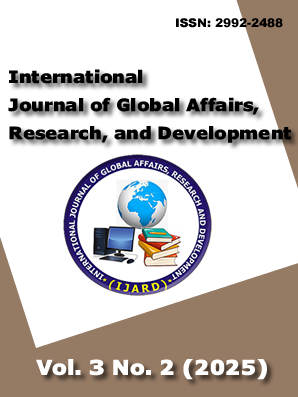MEASUREMENT OF RADON-222 GAS CONCENTRATION AND INVESTIGATING ITS EFFECTS ON LUNG CANCER IN SOME SELECTED OFFICES IN FEDERAL UNIVERSITY OF LAFIA, NASARAWA STATE, NIGERIA
Keywords:
Radon gas, Radiation Concentration, Administrative Offices, Dose Rate, Geiger-Mueller tubeAbstract
Radon gas and its ephemeral radioactive decay products constitute the principal origin of public exposure to naturally occurring radiation, thereby contributing almost half of the worldwide effective dose received by the populace. Radon (222Rn) and its isotopes have been acknowledged as a global predicament that notably causes lung cancer, although it remains unfamiliar to the majority of individuals. The research aimed to investigate the concentration of Radon gas with the help of an inspector alert, a nuclear radiation monitor with an inbuilt Geiger-Muller tube for the measurement of 222Rn concentration in the 14 investigated offices in the take-off site, Federal University, Lafia, to estimate the effective dose to the occupants from 222Rn. The dosimetry measurements were made with the inspector alert on count per minute (cpm) mode, and the radon concentration ranged from 43.50+10.00cpm to 67.00+32.00cpm at the administrative offices (A block) and 49.50+10.00cpm to 77.00+42.00cpm at the departmental head offices (B block) in the faculty of science. The annual effective dose to the occupants varied from 0.09
Downloads
Published
How to Cite
Issue
Section
License
Copyright (c) 2025 International Journal of Global Affairs, Research and Development

This work is licensed under a Creative Commons Attribution-NonCommercial 4.0 International License.
CC Attribution-NonCommercial 4.0 (CC BY-NC 4.0): This license allows others to download works from your journal and share them with others as long as they credit the author, but they can't use them commercially. They can create derivative works, but those derivatives must also be non-commercial and give appropriate credit.


